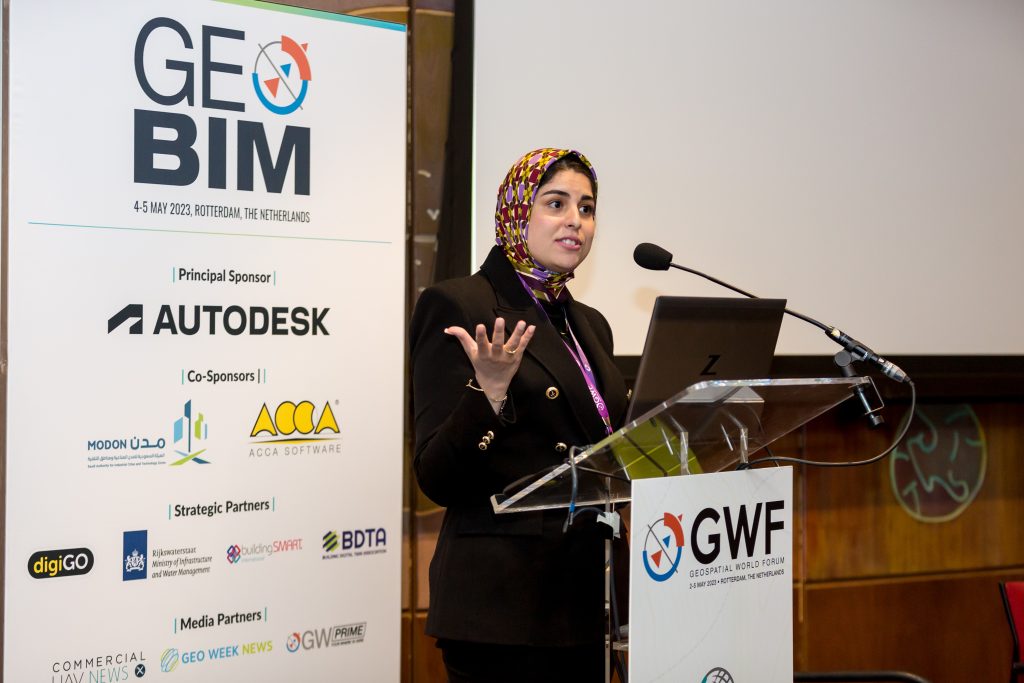AI: The Architect of Construction Transformation by Asmaa Abouleish, BIM Manager, EGIS Saudi Arabia
As we delve into the world of AI in construction, let’s begin by demystifying this transformative technology. AI, short for Artificial Intelligence, represents the simulation of human intelligence by machines. AI has mainly three types: Supervised Learning, where AI models learn from labeled data; Unsupervised Learning, where AI models find patterns in unlabeled data; and Reinforcement Learning, where AI models learn through trial and error. These types enable AI systems to acquire knowledge and make decisions.
Supervised learning
Supervised learning in construction can be leveraged to predict energy consumption patterns, enabling construction companies to optimize energy usage and implement energy-efficient strategies. Historical data can also be utilized for accurately predicting project prices, enabling construction companies to estimate costs and make informed budgeting decisions. These use cases enhance resource allocation and support effective decision-making in the construction industry.
Unsupervised learning
Unsupervised learning in construction provides valuable applications such as identifying defects in construction materials. By analyzing unlabeled data, AI models can detect subtle patterns or anomalies in materials, enabling early identification of defects and ensuring higher construction quality. By analyzing historical data, AI models can uncover hidden issues or patterns that contribute to project cost overruns, enabling more accurate cost estimation and budget planning. These applications assist construction professionals in mitigating risks, making informed decisions, and improving overall project performance and cost-effectiveness.
Unsupervised learning proves invaluable for cost-effective data analysis. By leveraging advanced algorithms, it enables precise identification of relevant data points, guiding the construction companies on what to measure precisely. This focused approach ensures efficient resource allocation, maximizes data value, and enhances decision-making processes. Unsupervised learning empowers construction to extract meaningful insights from data while minimizing expenses, making it a crucial tool in optimizing data collection efforts.
Reinforcement learning
Reinforcement learning in construction offers practical use cases. Firstly, it can be applied to optimize construction equipment operations. By training AI models through trial and error, autonomous construction equipment such as robots or drones can navigate construction sites, perform tasks with precision, and enhance overall efficiency.
Secondly, reinforcement learning can assist in schedule optimization. AI models learn from feedback in the form of rewards or penalties, enabling them to make informed decisions about resource allocation and task sequencing.
Let us deep dive and know how Reinforcement learning (RL) works to optimize schedules. It assigns rewards based on predefined criteria by us. For example, the reward can be based on completing tasks within allocated time frames, minimizing resource conflicts, or achieving project milestones. The AI model learns through trial and error, exploring different scheduling strategies and receiving rewards for desirable outcomes.
During the learning process, the model adjusts its decision-making to maximize the rewards it receives. Through iterative iterations, the reinforcement learning algorithm discovers optimal scheduling solutions that minimize delays, optimize resource utilization, and adhere to project constraints. By fine-tuning the reward structure and incorporating domain-specific knowledge, reinforcement learning algorithms can effectively optimize construction schedules enhance automation, improve project timelines, optimize resource management, and improve overall project efficiency.
Generative AI
In addition to the previous AI types, there is a generative AI like Midjourney. By using text prompts, Midjourney can generate images that find practical applications in architecture and construction. It enables exploration of conceptual designs, aids in project visualization, and assists with material selection. Figure 1 shows how Midjourney could be used to create conceptual designs.
Challenges
Implementing AI in construction poses several challenges. Limited availability and quality of data, as well as data silos, hinder AI model training. The industry’s traditional practices and resistance to change also impede adoption. Lack of skilled workforce proficient in AI and the need for substantial investment in infrastructure and technology further add to the challenges. Overcoming these hurdles requires addressing data issues, promoting a culture of innovation, upskilling the workforce, and establishing a clear AI implementation strategy that aligns with the unique requirements of the construction sector.
To implement AI, there are typically four key implementation processes: Intelligence, Business Process, AI Technology, and Development. In the Intelligence stage, a specific behavior that AI can perform is identified. Next, in the Business Process stage, a business process is defined that incorporates this behavior. Then, in the AI Technology stage, the AI solution and data strategy are determined. Lastly, in the Development stage, a software development plan is devised, addressing known AI issues (AI cancers). These processes, by MIT xPro, provide a structured approach for successful AI implementation within a concise framework.
In conclusion, the integration of AI in construction holds immense potential for improving efficiency, quality, and decision-making. Supervised, unsupervised, and reinforcement learning enable enhanced quality control, predictive maintenance, resource allocation, risk mitigation, and schedule optimization. Overcoming challenges like data limitations and resistance to change is crucial for successful AI implementation in construction, ultimately leading to safer, more efficient, and sustainable projects.




